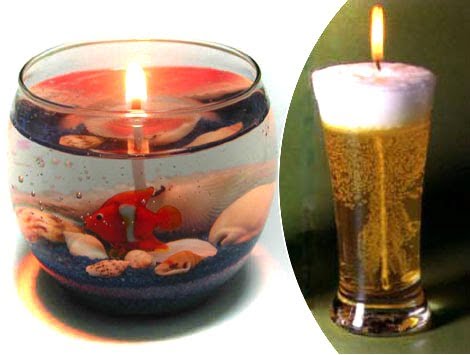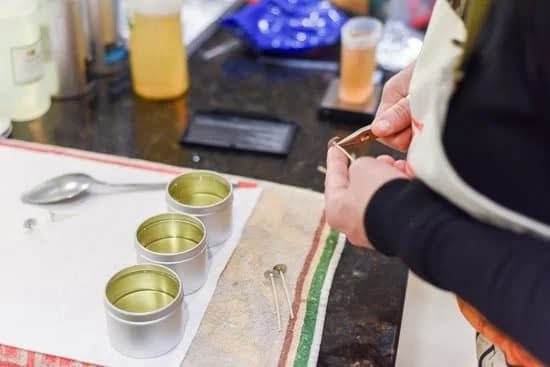The candle making industry is a fascinating world that combines art, science, and business. From its ancient origins to modern practices, the process of creating candles has evolved significantly, leading to a diverse range of products and innovations. In this article, we will delve into the history, techniques, and impact of the candle making industry, as well as explore the potential for future growth and development.
Candle making has been a cherished craft throughout history, with its roots dating back to ancient times. Over the years, advancements in ingredients and techniques have transformed candle production into a thriving industry with a rich heritage. By understanding the art and science behind candle making, we can appreciate the time-honored traditions that continue to shape this timeless practice.
As consumer preferences shift towards eco-friendly options and sustainable practices, the candle making industry has adapted to meet these demands. From traditional wax candles to innovative alternatives, there is a growing emphasis on environmentally conscious products. Additionally, entrepreneurs are finding opportunities in starting their own candle making businesses to cater to these evolving market trends. Through this exploration, we aim to uncover the multifaceted nature of candle making and its role in shaping both artistic expression and economic enterprise.
History of Candle Making
The history of candle making is a fascinating journey that dates back to ancient times. The earliest evidence of candle-like objects can be traced back to the Egyptians, who used rushlights or torches made from reeds dipped in animal fat.
The ancient Romans are also credited with developing the wicked candle, using tallow or beeswax as the fuel source. Throughout history, various civilizations have contributed to the evolution of candle making, from the use of whale oil in colonial America to the widespread use of paraffin wax in the 19th century.
As technological advancements and industrialization took hold, the process of candle making saw significant changes. With the introduction of stearin and hydrogenation processes in the 19th century, candles became more affordable and accessible to the masses. This marked a pivotal moment in the history of candle making, paving the way for further innovations in manufacturing and design.
In modern times, the art and science of candle making have continued to evolve, with an emphasis on sustainability and eco-friendly practices. Traditional methods have been combined with cutting-edge technology to create cleaner-burning and longer-lasting candles. As consumer preferences shift towards natural ingredients and environmentally conscious products, the candle making industry has adapted to meet these demands, driving further innovation within the market.
The Art and Science of Candle Making
In addition to the ingredients, understanding the techniques involved in candle making is crucial for producing high-quality candles. Factors such as the temperature at which the wax is melted, the pouring temperature, and the cooling process all play a role in determining the final outcome of the candle. Moreover, different types of candles require specific techniques for creating unique shapes and designs.
As the candle making industry continues to evolve, new techniques are being developed to meet consumer demand for innovative and eco-friendly products. This includes advancements in fragrance technology, sustainable sourcing of ingredients, and creative ways to repurpose materials for candle making. Additionally, candle makers are constantly experimenting with new designs and styles to cater to diverse consumer preferences.
It’s important for those interested in candle making to stay updated on these advancements in order to create products that resonate with modern consumers while also aligning with sustainability efforts within the industry.
| Ingredient | Role |
|---|---|
| Wax | Main component that provides fuel for the flame |
| Fragrance Oils | Add scent to the candle |
| Wicks | Ignites and sustains combustion of the wax |
The Growth and Evolution of the Candle Making Industry
The candle making industry has undergone significant growth and evolution in recent years, with a surge in demand for unique and innovative candle products. One of the key trends driving this growth is the increasing consumer preference for natural and sustainable products.
As a result, many candle makers are now turning to eco-friendly ingredients such as soy wax, beeswax, and essential oils to create their products. This shift towards sustainability has not only attracted environmentally conscious consumers but has also opened up new market opportunities for businesses within the candle making industry.
In addition to sustainability, another major trend shaping the industry is the rising popularity of artisanal and customized candles. Consumers are seeking out candles that reflect their personal style and preferences, leading to an increase in demand for handcrafted and bespoke candle offerings.
This trend has given rise to a new wave of candle makers who specialize in creating unique, one-of-a-kind products that cater to diverse tastes and aesthetics. From intricate designs to custom scents, these artisanal candles have become coveted items in the market.
Furthermore, technological advancements have also played a significant role in the evolution of the candle making industry. With the rise of e-commerce platforms and social media marketing, small-scale candle makers have been able to reach global audiences and build loyal customer bases.
This digital revolution has transformed the way businesses operate within the industry, allowing for greater accessibility and visibility for both established companies and independent artisans. As technology continues to advance, it presents further opportunities for innovation within the candle making industry, paving the way for continued growth and expansion.
Exploring Different Types of Candles
When it comes to candles, there are a myriad of options available, catering to different preferences, occasions, and beliefs. From traditional paraffin wax candles to eco-friendly soy and beeswax alternatives, the candle making industry continues to expand its offerings to meet the diverse needs of consumers.
Traditional Candles
Traditional candles are typically made from paraffin wax, a byproduct of petroleum refining. These candles have been the go-to choice for many years due to their affordability and widespread availability. They come in various shapes, sizes, and scents, making them suitable for a wide range of uses including decorative, aromatic, and religious purposes.
Eco-Friendly Options
In recent years, there has been a significant shift towards eco-friendly alternatives in the candle making industry. Soy wax candles have gained popularity due to their renewable source (soybeans) and clean-burning properties. Beeswax candles are another sustainable option, known for their long burn time and natural honey scent. Additionally, there is a growing demand for organic essential oil-based candles that contribute to a healthier indoor environment.
Other Innovative Types
Apart from traditional and eco-friendly options, the candle making industry has also seen an emergence of unique and innovative types of candles. This includes artisanal handmade candles with intricate designs, massage oil candles that melt into nourishing body oils when lit, and even flameless LED candles that mimic the flickering glow of real flames without the associated risks. These new types cater to specific niches within the market, offering consumers a diverse range of choices like never before.
As consumer awareness about environmental impact grows and preferences evolve towards sustainable products, it’s clear that the demand for eco-friendly candle options will continue to rise within the candle making industry. Whether it’s for relaxation, ambiance or ritualistic practices – consumers are seeking out products that align with their values of sustainability and social responsibility.
The Business of Candle Making
Starting a candle making business can be an exciting venture for individuals who are passionate about creating unique and high-quality products. Whether you’re interested in crafting traditional, scented, or eco-friendly candles, there are several key steps to consider when starting your own candle making business. Here are some essential tips and guidelines to help you get started:
Research and Planning
Before diving into the candle making industry, it’s crucial to conduct thorough research and develop a comprehensive business plan. This should include market analysis, potential target customers, competition assessment, and financial projections. Additionally, it’s important to identify your niche within the market – whether it’s offering luxury candles, organic options, or personalized designs.
Learn the Art and Science of Candle Making
To create high-quality products, it’s essential to have a strong understanding of the art and science of candle making. This involves familiarizing yourself with different types of wax, fragrance oils, wicks, dyes, and other essential ingredients. Investing time in learning various techniques for creating unique designs and scents will set your business apart in the competitive candle making industry.
Establishing Your Brand and Marketing Strategy
Building a strong brand identity is crucial for attracting customers in the candle making industry. Consider developing a compelling brand story that communicates your passion for creating candles and resonates with potential buyers. Additionally, having a well-defined marketing strategy that includes online presence, social media engagement, and perhaps even participation in craft fairs or markets can help promote your products effectively.
By following these initial steps when starting a candle making business, aspiring entrepreneurs can pave the way for success in this thriving industry. With dedication to craftsmanship and innovation, there are ample opportunities to carve out a niche within the market while contributing to the timeless beauty and practicality of candles.
The Impact of the Candle Making Industry on the Environment and Sustainability Efforts
The environmental impact of the candle making industry is an important consideration in today’s world. As the demand for candles continues to grow, it is crucial to understand the ways in which the industry can contribute to sustainability efforts and minimize its ecological footprint.
Environmental Concerns and Challenges
One of the main concerns regarding the candle making industry is the use of paraffin wax, a byproduct of petroleum refining. The production and burning of paraffin candles release potentially harmful chemicals into the air, contributing to indoor air pollution and posing health risks. Additionally, traditional wicks made from lead or zinc can also emit harmful substances when burned. These environmental challenges have led to a growing interest in alternative, more sustainable materials and production methods within the industry.
Sustainability Efforts and Innovations
To address these concerns, many candle makers are turning to natural and eco-friendly materials such as soy wax, beeswax, and coconut wax. These renewable options produce cleaner burning candles that are free from toxins and reduce overall environmental impact. Furthermore, there has been a shift towards using cotton or wood wicks that are free from metal additives, further improving the sustainability profile of candles.
The Role of Consumer Education and Awareness
In addition to industry-driven efforts towards sustainability, consumer education plays a crucial role in promoting environmental consciousness within the candle making market. By raising awareness about the environmental impact of traditional candles and highlighting the benefits of sustainable alternatives, consumers can make informed choices that align with their values for eco-friendly living.
As sustainability continues to be at the forefront of consumer preferences, there is an opportunity for manufacturers to capitalize on this trend by offering environmentally responsible products while contributing positively to both public health and environmental protection.
The Future of Candle Making
The future of the candle making industry is filled with exciting possibilities, as emerging technologies and market opportunities continue to shape the landscape of this traditional craft. As consumer preferences and demands evolve, so too must the methods and products within the industry. Here are some trends and developments that are paving the way for the future of candle making:
1. Sustainable Practices: With an increasing focus on sustainability and eco-consciousness, the candle making industry is embracing sustainable practices such as using renewable or biodegradable materials, minimizing waste, and reducing carbon footprint in production processes.
2. Customization and Personalization: Consumers are seeking unique and personalized products, which has led to a rise in customizable candles. Whether it’s choosing their preferred scent, color, or even designing their own labels, customization is a trend that is gaining momentum in the candle making industry.
3. Advanced Manufacturing Technologies: From automated pouring systems to 3D printing for custom molds, advanced manufacturing technologies are revolutionizing how candles are made. These innovations not only make production more efficient but also allow for greater creativity and flexibility in design.
As the candle making industry continues to embrace these emerging technologies and market opportunities, it is clear that there is much to look forward to in the future of this timeless craft. From environmentally-friendly practices to personalized products and advanced manufacturing methods, the possibilities are endless for those involved in the world of candle making.
Conclusion
In conclusion, the candle making industry has a rich history and continues to thrive in the modern world. From ancient times to the present day, candles have played a significant role in various cultures and continue to be valued for their beauty and practicality. The art and science of candle making have evolved over time, giving rise to a wide range of options for consumers, including traditional and eco-friendly alternatives.
As we look towards the future of the candle making industry, it is important to consider its impact on the environment and sustainability efforts. With growing concerns about climate change and pollution, there is an increased focus on developing more sustainable practices within the industry. This includes using renewable ingredients, reducing waste, and exploring innovative technologies that minimize environmental impact.
Despite these challenges, the future of the candle making industry also presents exciting opportunities. Emerging technologies and market trends offer new possibilities for growth and innovation. As consumer preferences evolve, there is potential for diversification and expansion within the industry.
Ultimately, candles will continue to hold a timeless appeal for their ability to create ambiance, evoke emotions, and provide practical lighting solutions. The art of candle making remains vibrant and relevant, offering both historical significance and contemporary allure in today’s market.
Frequently Asked Questions
Is the Candle Industry Profitable?
The candle industry can be profitable, especially for those who are able to create unique, high-quality products that appeal to a specific market. With the growing demand for handmade and scented candles, there is potential for profitability.
What Kind of Industry Is Candle-Making?
Candle-making falls under the consumer goods industry, specifically in the home decor and fragrance sector. It involves creating products that are both functional and aesthetically pleasing, making it a blend of craftsmanship and retail.
Is Candle-Making a Viable Business?
Candle-making can be a viable business for individuals who have a passion for crafting and are willing to invest time and effort into developing their skills and brand. With the right marketing strategies and product differentiation, it is possible to create a successful candle business.
However, like any business, careful planning and market research are crucial to ensure its viability.

Welcome to my candle making blog! In this blog, I will be sharing my tips and tricks for making candles. I will also be sharing some of my favorite recipes.





